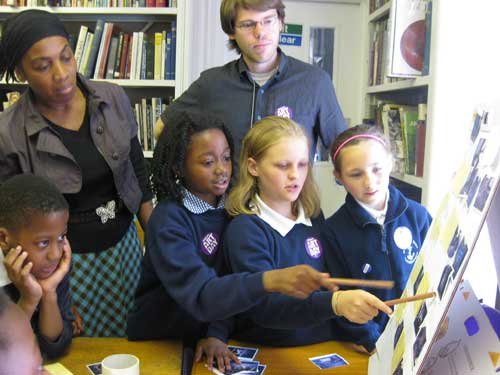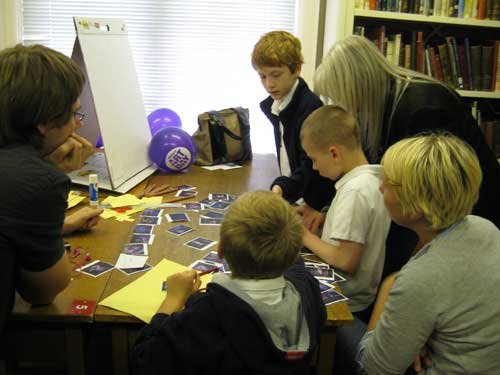
Part of Dreams of Progress.


As part of Children’s Art Day 2009 and the Dreams of Progress exhibition, a storyboarding workshop was organised for the year 4 pupils of St Clement Danes School. Children learned how to create storyboards from pre-existing video material. Aside from the fun and practical experience gained from the workshop, kids also learned how the same video footage can be sequenced to create many different stories, and that what is shown on TV is not an exact representation of reality but the result of a montage.
Children used footage from the utopian video ‘Design for Dreaming’ (General Motors – 1956) to create their storyboards. The workshop was inspired by the ‘Same video, different use’ collaborative project initiated by the video artist Remyyy, where artists can each post their remixes of the same archive video online. The best storyboard from the workshop was transformed into a movie and posted online next to the contribution from video artists.
Winning storyboard of the year 4 from St Clement Danes School.
During the workshop, children were first presented with the original video. I then showed them an example of a storyboard (two of them were created before the workshop: ‘Once upon a time’ and ‘I had a freaky nightmare’). The kids were split in four groups, each having in front of them a little less than a hundred printed images representing scenes from the movie. They randomly picked up a sentence to start their story with, e.g. “1..2..3..Action!”, “This is the future”, “Dance to my beat”, “It was a freaky nightmare”. The groups had 40 minutes to create their storyboard, made of scenes from the original movie and texts that they could add in between. In the last 10 minutes of the session, the groups presented their storyboards to the rest of the class, so that pupils could vote for their favourite story.




The children did not have any problems understanding the concept of sequencing movie scenes. The main challenge they experienced was to invent a new story and avoid replicating the original film. They succeeded after a short time necessary to distance themselves from what they had just seen.
The storyboarding workshop would not have run so smoothly without the involvement of Rossella Black from the WRF, the help of the volunteers to prepare the session, and the facilitation of the teachers from St Clement Danes School.